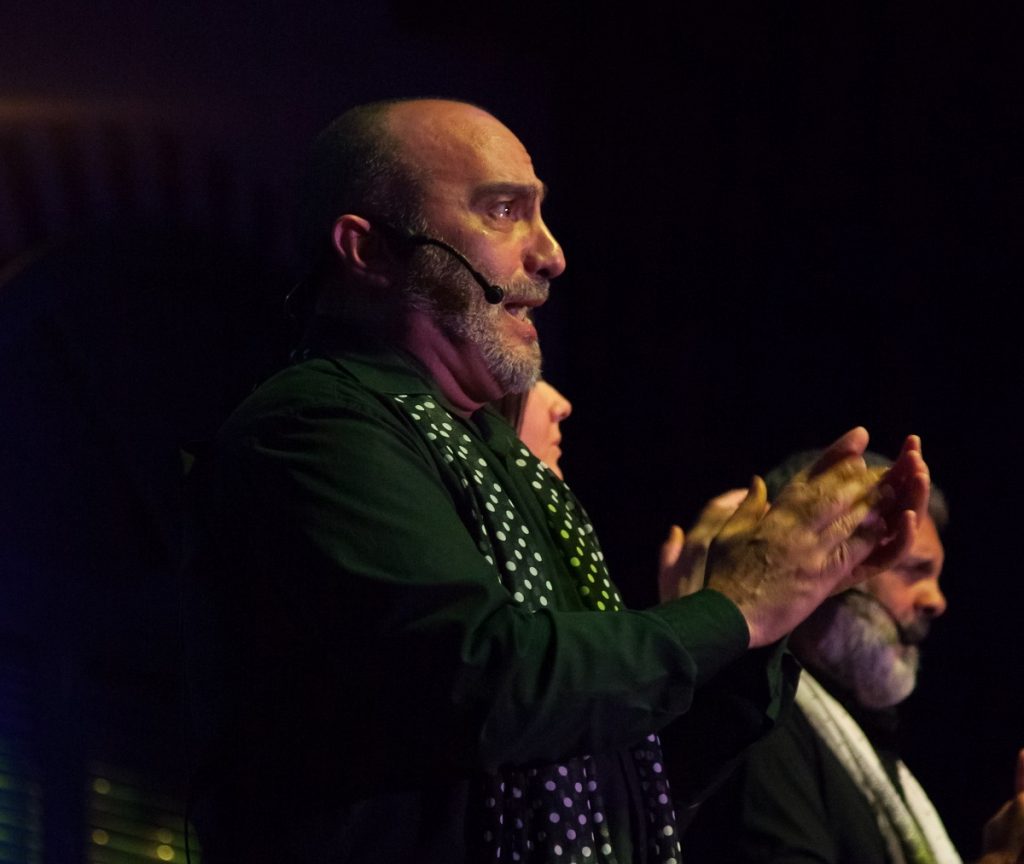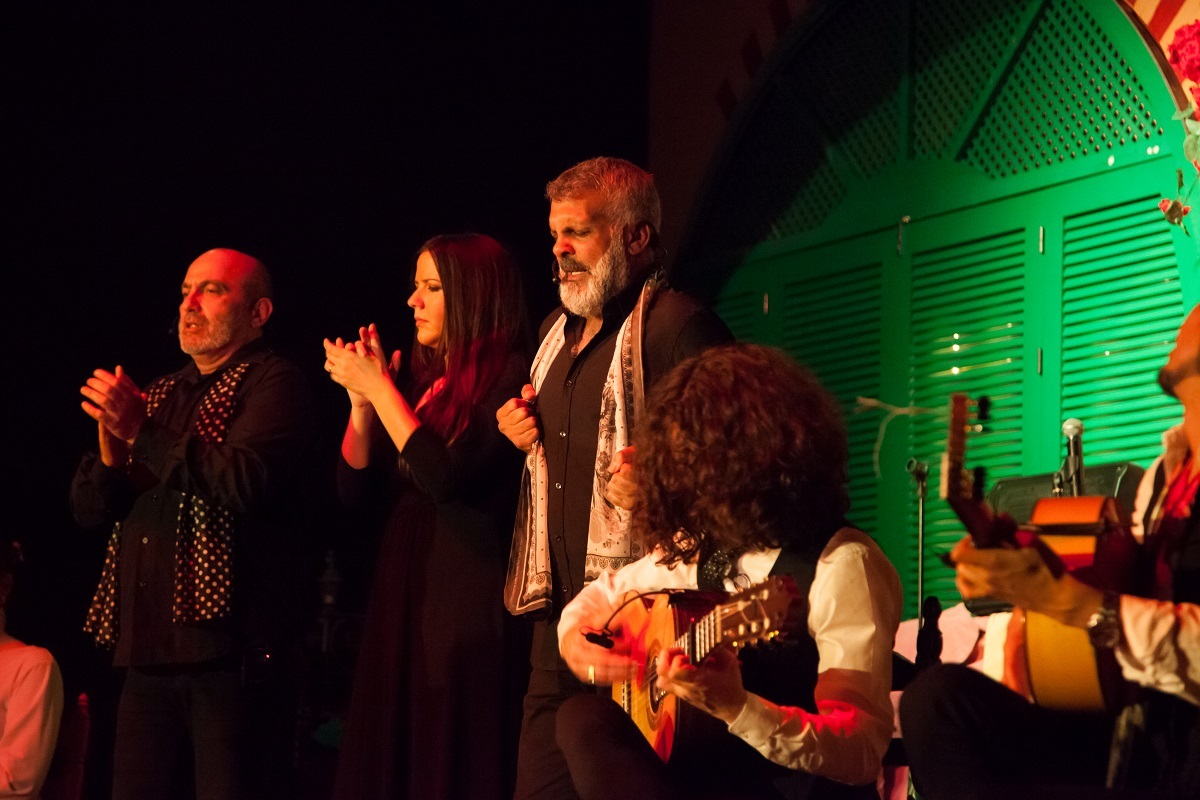
Cante jondo or flamenco cante (flamenco singing) constitutes a unique way of interpreting flamenco and the purest expression of showing feelings on tablao or stage. It is an interpretation based on lament, from the first to the last stanza, and the result of which is quite a manifestation of emotions, where the deepest feelings of flamenco singers come to the surface.
It is the sober tone and drama of the cante (singing) that leans on the features of the artist’s voice that stretches the melody or the syllable to his liking, wherever he wants to mark his feeling the most.
The origin of cante jondo dates back a few centuries ago, in Andalusia, although theorists still do not agree on what was the first manifestation of this profound singing.
The Cádiz-born composer Manuel de Falla considers that, with the arrival of the gypsy people in southern Europe, some singings with Arabic and Hebrew lyrics settled down, which eventually gave rise to cante jondo. On the other hand, other researchers point out that this type of singing came from the hand of the ancient liturgical songs that were interpreted in Spanish churches.
This type of singings, also known as Andalusian primitive cante, is made up of various flamenco styles, among which the tonás, martinetes, seguiriyas, soleás and flamenco tangos stand out.

In cante jondo, a division should be made between cantes grandes and cantes chicos. The first ones are called like this because they are deep singings and they usually have great drama. Among them we find the seguiriyas, the soleás, the martinetes and the tonás. You can identify it by its letters, which usually reflect pain and anguish.
On the other hand, the cantes chicos that are more related to improvisation and playing more mundane themes such as love, happiness or humor. With a more festive rhythm, examples are bulería, tangos and alegrías.
The truth is that cante jondo is part of the repertoire of flamenco cantes, including gypsy singings (those originating from emigrant gypsies of the 15th century) and flamenco styles, such as farruca, garrotín or Cuban rumba .
In fact, these compositions have served as the basis for the fusion of many other styles, giving rise to the formation of other flamenco styles. In the end, flamenco has been transformed into a motley art, with a great variety of music at its core.
Among its most common features, cante jondo is usually characterized in its structure by the obsessive repetition of a note, to provide action and dynamism to the “conversation” between the singer and the guitar. It is a painful song, often improvised and interspersed with the ‘quejíos’ so typical of flamenco.
Among the main singers of this type of singing we find Antonio Fernández, popularly known as “El Planeta”, Tio Luis el de la Juliana, El Fillo, La Niña de los Peines, Manolo Caracol, Camarón de la Isla, among others. In addition, the creation in June 1922 of the “Concurso de Cante Jondo” in Granada, was the culmination of this flamenco singing, promoted by Manuel de Falla and Federico García Lorca.
To enjoy cante jondo it is essential to hear it live, from the immediacy of the live performance, to capture the strength and purity that characterize it in its performance. The singer joins the notes to give a feeling of musical harmony through his ability to use the various techniques that make up this deep cante. The guitar establishes a “dialogue” with the singer or “responds” to him during breaks in which he breathes or takes air to “continue the conversation.”
There is no doubt that flamenco singing is capable of reaching the deepest of feelings. The best way to enjoy it is to see it live. An example of how this art reaches the senses, in the following video. Silvia Reina singing for tangos.
Don’t miss out on this authentic flamenco experience! Cante jondo, with internationally renowned artists. Flamenco in capital letters.
© 2025 El Palacio Andaluz. All rights reserved.